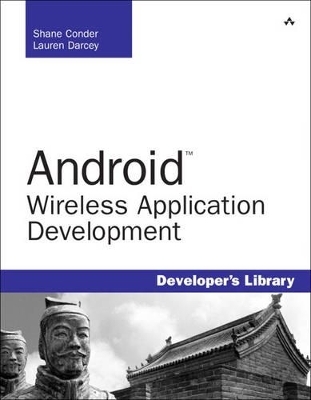
Android Wireless Application Development
Addison-Wesley Educational Publishers Inc
978-0-321-62709-4 (ISBN)
- Titel erscheint in neuer Auflage
- Artikel merken
Shane Conder has extensive development experience and has focused his attention on mobile and embedded development for the past decade. He has designed and developed many commercial applications for BREW, J2ME, Palm,Windows Mobile, and Android. Shane has written extensively about the mobile industry and evaluated mobile development platforms on his tech blogs and is well known within the blogosphere. Shane received a B.S. degree in computer science from the University of California. A self-admitted gadget freak, Shane always has the latest phone or laptop. He can often be found fiddling with the latest new technologies, such as Amazon Web Services, Android, iPhone, Google App Engine, and other shiny, new technologies that activate the creative part of his brain. He also enjoys traveling the world with his geeky wife, even if she did make him dive with 4-meter-long great white sharks, and he almost got eaten by a lion in Kenya. He admits that it was his fault they got attacked by monkeys in Japan and that perhaps he should have written his own bio. (Author’s note:Wait, what?!) Lauren Darcey is responsible for the technical leadership and direction of a small software company specializing in mobile technologies–Android being the most exciting and promising for the future.With almost two decades of experience in professional software production, Lauren is a recognized authority in enterprise architecture and the development of commercial-grade mobile applications. Lauren received a B.S. degree in computer science from the University of California, Santa Cruz. Lauren spends her copious free time traveling the world with her geeky mobileminded husband and is an avid nature photographer. Her work has been published in books and newspapers around the world. In South Africa, she dove with 4-meter-long great white sharks and got stuck between a herd of rampaging hippopotami and an irritated bull elephant. She’s been attacked by monkeys in Japan, gotten stuck in a ravine with two hungry lions in Kenya, gotten thirsty in Egypt, narrowly avoided a coup d’état in Thailand, and walked part of the Great Wall of China, where she took the photograph that graces the cover of this book.
Introduction
Part I: An Overview of Android
Chapter 1: Introducing Android
Chapter 2: Your Android Development Environment
Chapter 3: Writing Your First Android Application
Part II: Android Application Design Essentials
Chapter 4: Understanding the Android Application Life Cycle
Chapter 5: Managing Application Resources
Part III: Android User Interface Design Essentials
Chapter 6: Exploring User Interface Screen Elements
Chapter 7: Designing Android User Interfaces with Layouts
Chapter 8: Drawing and Working with Animation in Android
Part IV: Using Common Android APIs
Chapter 9: Using Android Data and Storage APIs
Chapter 10: Using Android Networking APIs
Chapter 11: Using Location-Based Services (LBS) APIs
Chapter 12: Using Android Multimedia APIs
Chapter 13: Using Android Telephony APIs
Chapter 14: Using Android 3D Graphics With OpenGL ES
Chapter 15: Using Android's Optional Hardware APIs
Part V: More Android Application Design Principles
Chapter 16: Working With Notifications
Chapter 17: Working With Services
Part VI: Deploying Your Android Application to the World
Chapter 18: The Mobile Software Development Process
Chapter 19: Developing and Testing Bulletproof Android Applications
Chapter 20: Selling Your Android Application
Part VII: Appendixes
Appendix A: The Android Emulator Quick-Start Guide
Appendix B: The Android DDMS Quick-Start Guide
Appendix C: The Android Debug Bridge Quick-Start Guide
Appendix D: The SQLite Quick-Start Guide
Glossary
| Erscheint lt. Verlag | 10.9.2009 |
|---|---|
| Verlagsort | New Jersey |
| Sprache | englisch |
| Maße | 228 x 179 mm |
| Gewicht | 948 g |
| Themenwelt | Mathematik / Informatik ► Informatik ► Netzwerke |
| Technik ► Nachrichtentechnik | |
| ISBN-10 | 0-321-62709-1 / 0321627091 |
| ISBN-13 | 978-0-321-62709-4 / 9780321627094 |
| Zustand | Neuware |
| Informationen gemäß Produktsicherheitsverordnung (GPSR) | |
| Haben Sie eine Frage zum Produkt? |